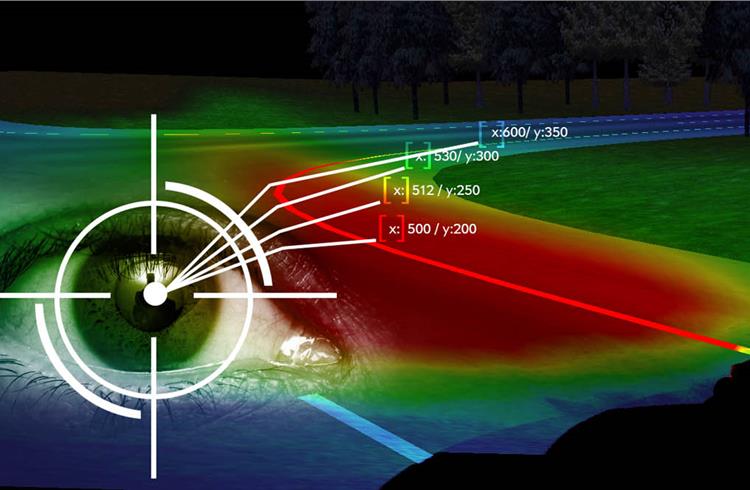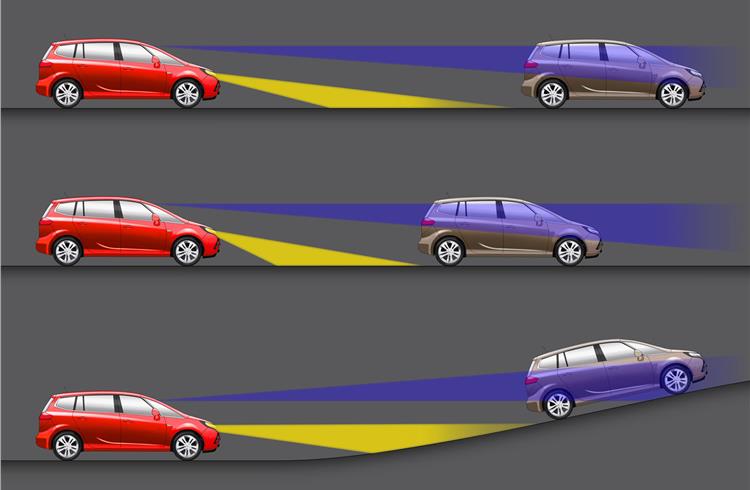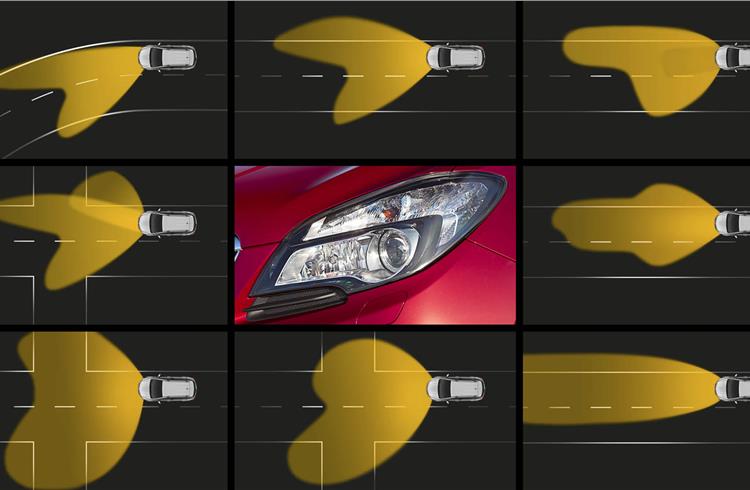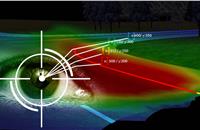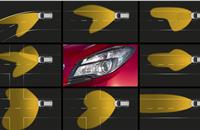Opel engineers shed light on new eye-tracking tech
Boffins at carmaker Opel are working on developing the automotive light of the future. They are actively engaged with work on the third generation of groundbreaking
Boffins at carmaker Opel are working on developing the automotive light of the future. They are actively engaged with work on the third generation of groundbreaking adaptive light technology for cars which offers up to 10 automatic modes and available on most Opel models, and the LED array light which is slated to go into production shortly.
"The idea is to direct the light through the driver's line of sight and meter; we have been following this for about two years. The more we see how attractive this technology is, the more we promote our joint project," says Ingolf Schneider, head, light technology for Opel, cooperation between the International Technical Development Center of Opel and the Technical University of Darmstadt, Germany.
In contrast to high-performance eye tracking systems with five to 10 cameras at the beginning of the research, only a simple webcam is needed. This targets the driver’s head and based on the scans of prominent points such as the nose and eyes can detail the movement and thus sight. This information is transferred as system data instructions for actuators, which in turn align the electronically controlled servomotors of the light projectors quickly. This research approach helped the engineers and scientists, who were already quite close to the moment-control auto headlights. However, at this stage, the methodology adopted to calculate the data too much time and the frame rate of the webcam was also too low for traffic requirements.
Subsequently, the optimisation of the camera parameters and the adjustments to the eye tracking algorithm led to a breakthrough. At dusk and at night, a responsive camera with infrared sensors on the edges and photodiodes in the middle of samples scans the driver's eye more than 50 times per second. Thanks to the immense faster data processing and transmission, the response to the headlight control motors is virtually in real time – horizontally and vertically at the same time.
In theory though there’s a problem: the eye is naturally unconsciously from one point to the next. If the system understands it the same way, hectic light cone hops would be the result. "That's why we have developed a sophisticated delay algorithm that ensures a smooth management of the light cone," explains Ingolf Schneider. "And the best part is that the eye tracker does not need to be recalibrated each time. So people can get behind the wheel of any of our cars and the system works smoothly in all. And should the driver be distracted by the traffic, it is not as dark in the direction of travel. The low beam guarantees light orientation and positioning and a sufficient level of illumination everywhere.”
Opel says it already has advanced systems and technologies that provide maximum safety and optimum visibility at night. A breakthrough is the current generation of adaptive AFL+ headlights fitted on a wide range of Opel models. It features up to 10 light functions. The light beam of the xenon headlamps automatically adjusts to different driving conditions, road and weather conditions at (variable light distribution for city, highway and motorway and play and bad weather). In addition, there are features such as dynamic cornering lights, cornering and energy-saving LED daytime running lights. Direction and intensity of the light beam changes depending on the steering angle and vehicle speed. The AFL automatically switches from headlamps to low beam when the front-facing camera detects the lights of an oncoming or preceding vehicle.
LED array light system coming up
Along with the continuous improvement of AFL and the development of the next-light generation eye tracking technology, engineers have conducted validation tests for the introduction of the LED array light system in Opel models at the International Technical Development Center in Rüsselsheim. It raises the glare-free high beam standard and automatically and continuously adapts to any traffic situation. The LED array light works for interacting with the Opel front camera. At the same time it highlights the functions in terms of situational adjustment and precision to the next level. If the camera detects oncoming or preceding vehicles, individual LEDs are disabled and the environment remains lit. In this way the matrix light for the occupants of the vehicle turns night into day, without blinding oncoming traffic. Opel plans to introduce the production-ready system within the next 18 months on the market.
RELATED ARTICLES
Branded content: HL Klemove inaugurates first Local ADAS Radar Manufacturing Unit in India, marks a significant achievement in “Make in India” initiative
The inauguration ceremony was held in the presence of Vinod Sahay, President and CPO of Mahindra & Mahindra Ltd. and Dr....
BluWheelz to 'Green Up' logistics sector
With their EVs-as-a-service solution, the startup is playing it smart with costs and looking to electrify the entire seg...
BRANDED CONTENT: Spearheading the EV revolution in India
Jio-bp is a joint venture between Reliance Industries and BP PLC where both entities have married international expertis...





 By Autocar Pro News Desk
By Autocar Pro News Desk
 18 Mar 2015
18 Mar 2015
 4300 Views
4300 Views



